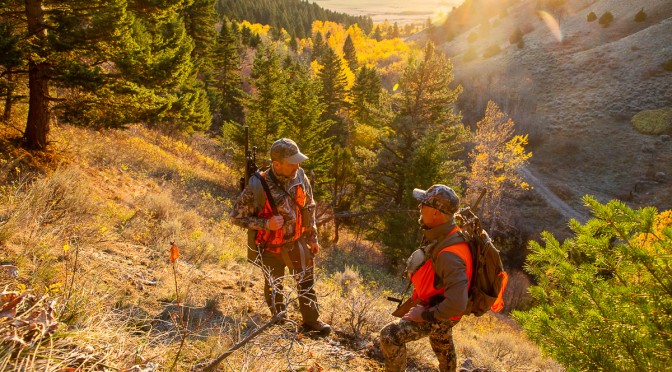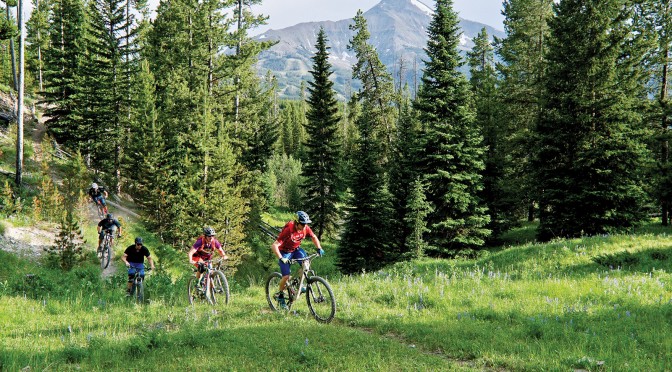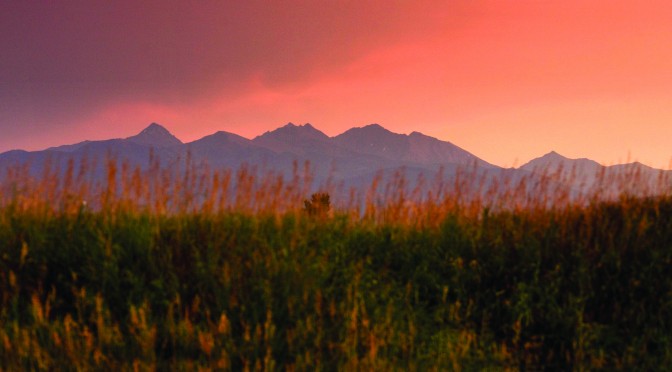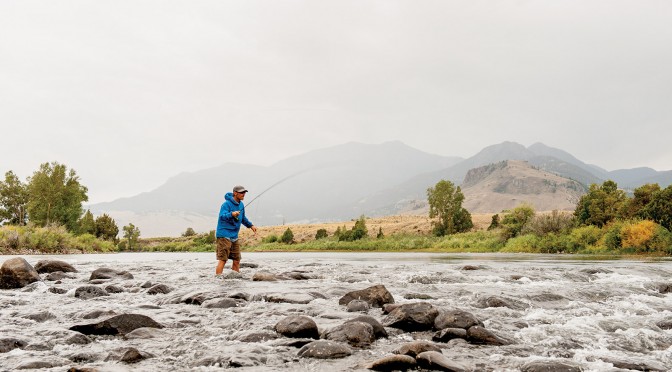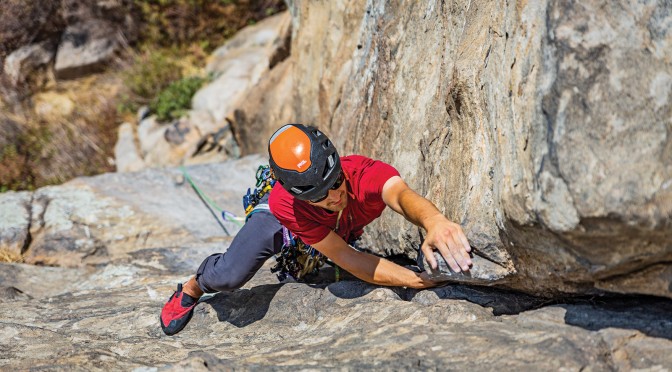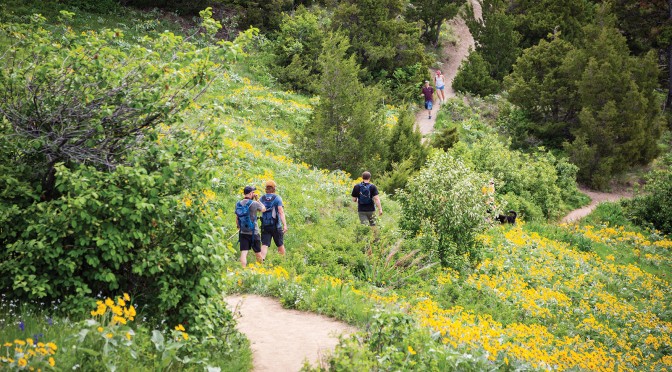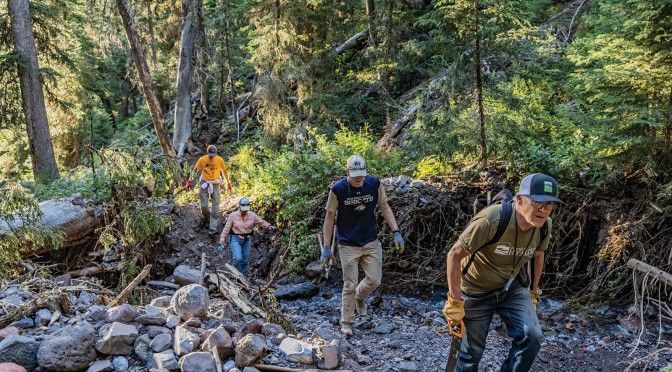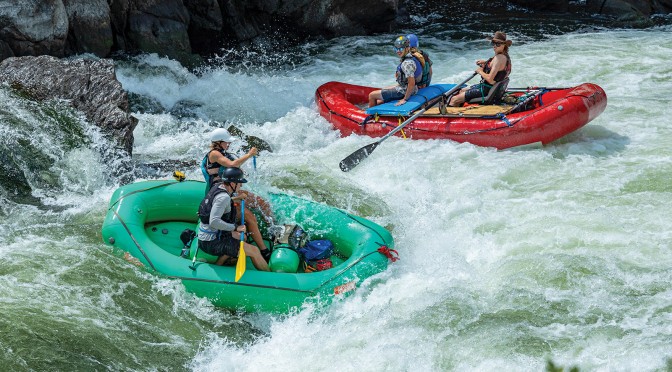Lace ‘Em Up
by Corey Hockett
Bozeman-area trails are a treasure, no matter where you come from. Like a spider web from city center, hundreds of miles of dirt paths lie at our fingertips—we only need to hop on and take off. Our town’s trustworthy trail whisperer—the Gallatin Valley Land Trust—manages 80 miles (and counting) of foot and bike routes, connecting in-town locations to deep wilderness settings. There are options for all seasons and all inclinations, so no matter your passion, Bozeman’s got you covered.
If you’re new—and we won’t judge—you’ve got a lot to learn. But even more importantly, you’ve got a lot to explore. One of the best things about being in Bozeman is that you’re likely never further than 10 minutes from the nearest trail. Once you get ‘em mapped out, you’ll be commuting to work, biking at lunch, and going on ridge runs at sunset. And believe us, it’s just as great as it sounds.
In Town
The Gallagator
Every good town has a trail that runs through the heart of it, and the Gallagator is Bozeman’s. Named after an old railway line, the Gallagator is one of our finest commuter trails. Located on the east side of town, with access to both the top and bottom of Peets Hill, this path will take you from downtown through Langhor Park and up to campus. Along the way, you’ll pass community gardens, a climbing boulder, and many a smiling citizen.
East Gallatin Rec Area
On the north side of town, the East Gallatin Rec Area offers a web of trails and amenities starting from its centerpiece, Glen Lake (a.k.a., East Gallatin Pond). For solitude, meander through cottonwoods and willows along the river. If you don’t mind some company, saunter around the pond for a lap or two. When the weather’s nice, so is the water—Glen Lake is great for paddleboarding, fishing, and a good ol’ fashioned swim. Near the parking area, you’ll find beach volleyball and a climbing boulder.
West-Side Trails
While the west side of town is seeing the fastest growth, patchy trails weave through the sprouting neighborhoods and offer a quiet escape to what the locals refer to as the Bozeman bustle. Follow them intermittently from the Bozeman Pond down Cattail Creek to Oak Street. From there, the Gallatin Regional Park is just a stone’s throw away with more trails, water bodies, and a sledding hill during the winter. Other trails shoot through neighborhoods in all directions.
On the Outskirts
M Trail
Like many Montana towns, Bozeman boasts an emblematic hike leading to a popular overlook. It’s a bit over a mile (via the easy route) from the parking lot to the big white M. For folks who want a more demanding hike, take the right fork at the trailhead and head straight up the right side of the slope. Cutting off half the distance, as well as all of your shade, this route will get your heart pumping.
Drinking Horse
On the opposite side of Bridger Canyon Rd. from the M, Drinking Horse is another close-to-home classic. The mostly-shady jaunt (around 2.2 miles) takes you up through lodgepole pine and Douglas fir to a knoll with panoramic views of the valley and up into Bridger Canyon. This one’s great for an after-work run, or, if you happen to be on a first date, our advice is to head here near sunset.
Triple Tree
Just south of town, with parking off of Sourdough Rd., Triple Tree is a favorite with hikers, runners, and bikers. The trail to the overlook and back is around 4.5 miles, with great views of the Bridgers and Tobacco Roots at the top. Along the way, you’ll pass through prime habitat for deer, elk, moose, and bear, as well as a number of bird species. A fair stretch of trail zigzags Limestone Creek, a handy water source for your canine companion.
Higher Ground
Sacajawea Peak
The Bridger ridgeline is home to a number of named peaks, but the one that trumps them all (in elevation at least) is Sacajawea, or Sac as the locals call it. Drive the long, bumpy track up to Fairy Lake, in a vehicle with high clearance, and start your hike at the end of the road. You’ll be greeted with great views at the pass and even better ones at the summit. Give a wide berth to the mountain goats you’re sure to encounter along the way.
Storm Castle
From Hwy. 191, Storm Castle is arguably the most prominent feature rising above Gallatin Canyon. The trail begins near Storm Castle Creek and climbs 2,300 ft. over 2.5 miles through forest and sage to the top of the multi-tiered rock formation. It’s a Bozeman staple, and on a good day will grant you a dramatic perspective of Gallatin Peak, as well as the flowing river below.
Lava Lake
On hot summer days, nothing beats working up a sweat on a hike and washing it off with a swim in a mountain lake. Around Bozeman, you won’t find a better place to do so than Lava Lake. The trail begins at the 35mph bridge on Hwy. 191 in Gallatin Canyon (slow down as you approach the bridge or you’ll miss the turn-off). Hike three forested miles to a rocky basin filled with emerald-green water. A good cliff-jumping spot can be found on the north side of the lake.
For more local trails, visit the outsidebozeman.com/trails-tours webpage.
Essential Gear
One of the best parts of hitting the trails with your own two feet—be it walking, running, or hiking—is the dearth of necessary gear. For the most part, so long as you’ve got a solid pair of shoes (or tough feet) and proper clothes (read: layers) you should be good to go. Of course you’ll need to bring food and water; other considerations should include sunscreen, ball cap, a first-aid kit, and bear spray. There’s griz in these hills—learn where to expect them, how to avoid them, and how to fend off an attack.
Etiquette
We’ve all seen the triangle signs: bikers yield to hikers and the both of them yield to horse riders. This is a good starting point, but do not let it fly in the face of rationality. As hikers, it’s often easier to jump off the trail to let a biker pass. Use discretion and be respectful.
The issue of loud music is becoming more prevalent in our outdoor spaces. Remember, trails are shared by all. If you like to listen to music while outside, keep in mind that many of us do not. Don’t be the guy who blasts music on an exterior speaker on your hike up Sourdough. Other folks are looking for quietude—don’t ruin their experience.
Finally, the dog poop thing. Pick up after your pooch. Period. And putting it in a bag and leaving the bag on the trail does not count—you’ll forget and someone else will have to deal with it later. Bozeman’s outdoors are great because everyone does their part in looking after them. Do yours.
Events
Bozeman’s outdoor calendar is full of trail-related events year-round. There are always ways to get involved and give back, not to mention dozens of races, community hikes, and weekly fun runs. Here are some highlights (a comprehensive calendar can be found at outsidebozeman.com/events).
May
Cleanup Day – Hyalite Canyon. After a long winter, Hyalite needs some love. Pitch in for a morning, bagging trash and tidying trailheads. hyalite.org.
May-June
GVLT Discovery Walks – Bozeman. Meet new people and make new friends on these one-hour guided walks along the Main Street to the Mountains trail system. 80+ miles await, all of which are right here, in and around town. gvlt.org.
June
Summer Trails Challenge – Bozeman. Every mile you log on area trails earns real money to support GVLT and its mission. gvlt.org.
June 5
National Trails Day – Bozeman. This is the best day to give back to the trails that give us so much. Almost every trail-related nonprofit in town has a workday scheduled, so you’ll have plenty of options to choose from. gvlt.org.
June-August
MWA Wilderness Walks – SW MT. When you’re ready to go deep, sign up for a guided hike into a Wilderness Area near Bozeman. Naturalist-led, these outings instill a greater appreciation for our protected landscapes while imparting useful information about wild nature. wildmontana.org.
August
Hyalite Fest – Hyalite Canyon. Head up to Bozeman’s favorite backyard rec area for a fun run, day hikes, and a general celebration of all things Hyalite. hyalite.org.
September 24
National Public Lands Day – Bozeman. Around here, we use public lands all the time, which means they need a little TLC every year. Use this last Saturday of the month to go for a hike, do some trail maintenance, or find a new trail run. gvlt.org.
October
Cleanup Day – Hyalite Canyon. Summertime is hard on Hyalite, so help give the place a facelift by picking up trash at trailheads. hyalite.org.
Editor’s note: Dates are subject to change based on weather and other factors. For the most updated information, visit outsidebozeman.com/events.

